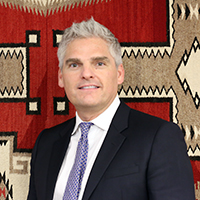The Centers for Disease Control and Prevention (CDC) estimates that there were 3,700 American Indian and Alaska Native (AI/AN) living with HIV in 2011. Of these, an estimated 19% percent had not been diagnosed. That means in 2011 there were nearly 700 AI/AN people unaware of their status and not accessing life-extending care and treatment. Making things worse is that AI/AN persons diagnosed with AIDS have the shortest survival time of any race. This disparity may be due to late diagnosis, lack of access to care, adherence to treatment, or a combination of these factors. The good news is that an estimated 80 percent of AI/AN people living with HIV knew of their infection.
The CDC and IHS recommend that everyone between the ages of 13 and 64 get tested for HIV at least once. People whose behavior puts them at risk for HIV should be tested at least once a year. HIV testing is the critical first step to obtaining care and treatment. HIV testing during a doctor visit can help with quick start-up of medications for HIV treatment if necessary. And knowing one has HIV is associated with reduced HIV risk behavior. For those whose HIV test result is negative, there are more prevention tools available today than ever before, including pre-exposure prophylaxis [PDF].
In the last few years, IHS facilities have raised our screening coverage from nearly just a third to one half of all of our patients. This represents over 70,000 patients being tested for the first time. However, screening among men 20-49 years old is lower than the general population. This is likely due to this group of men accessing primary care providers less often, and that HIV screening needs to be made routine in medical services beyond scheduled primary care visits.
IHS data indicates there were 2,273 new diagnoses of HIV in the years 2005-2014. Of all of the AI/AN people living with diagnosed HIV infection who are treated at IHS facilities, about 40 percent have achieved viral suppression, which is about the same as the world-wide viral suppression rate. Viral suppression means that HIV levels in the blood are so low that they are usually undetectable and that HIV is less likely to be transmitted to others. Let me tell you why early detection of HIV, early entry into treatment, and receiving sustained treatment is so important. There's an exciting - and I think achievable -worldwide goal that says if by the year 2020, we can get 90 percent of all people living with HIV to know their HIV status, and get 90 percent of all people with diagnosed HIV infection to receive sustained antiretroviral therapy, and get 90 percent of all people receiving antiretroviral therapy to achieve viral suppression, we can end the AIDS epidemic by 2030!
Take control of your health by knowing your status. Please talk to your healthcare provider about an HIV test, or use the HIV.gov HIV Testing & Care Services Locator to find an HIV test site near you.
Related Content:
Hepatitis C Virus in Indian Country
IHS National HIV/AIDS Program
New Funding Awards Promote HIV/AIDS Prevention and Engagement in Care



